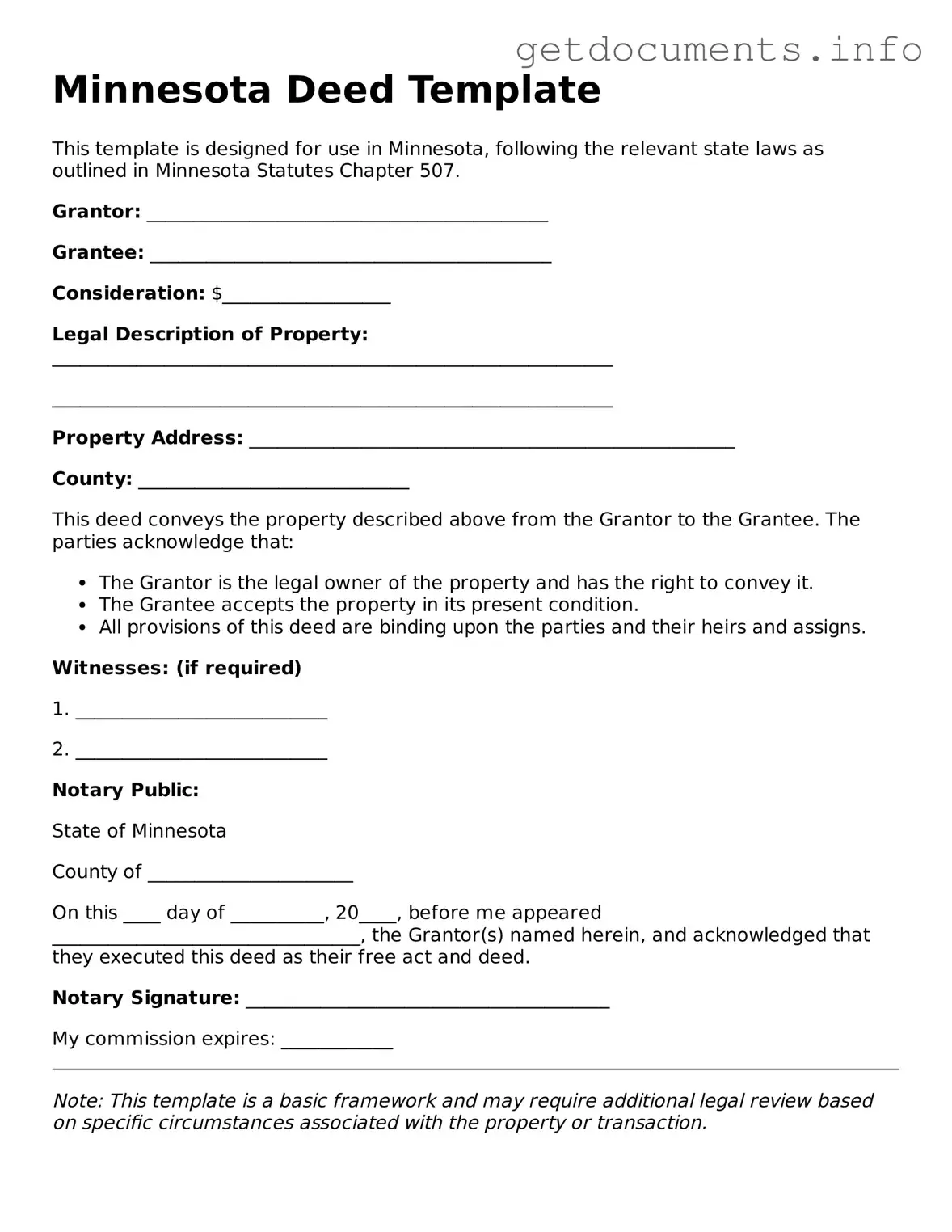In Minnesota, the Deed form serves as a crucial legal document in the transfer of property ownership. This form not only facilitates the exchange of real estate but also ensures that the rights and responsibilities associated with the property are clearly defined. Among the key aspects of the Minnesota Deed form are the identification of the grantor and grantee, which establishes the parties involved in the transaction. Additionally, the form outlines a detailed description of the property being transferred, including its boundaries and any relevant identifiers. The inclusion of warranties or covenants provides assurances regarding the property’s title, safeguarding the interests of the grantee. Furthermore, the Deed must be properly executed, which typically requires the signature of the grantor and may necessitate notarization. Understanding these elements is essential for anyone involved in property transactions in Minnesota, as they lay the foundation for a legally binding agreement and help prevent future disputes.
